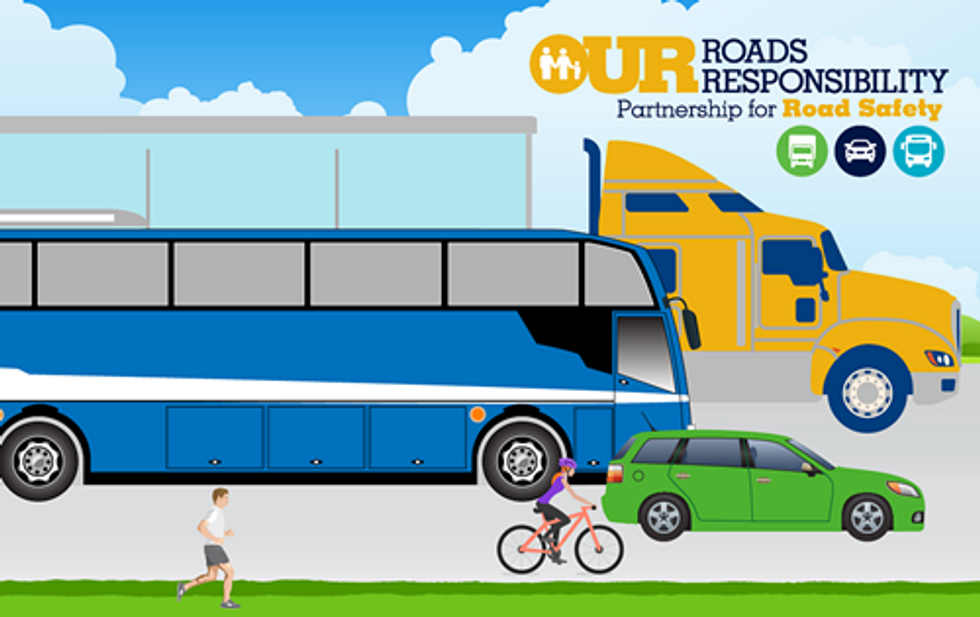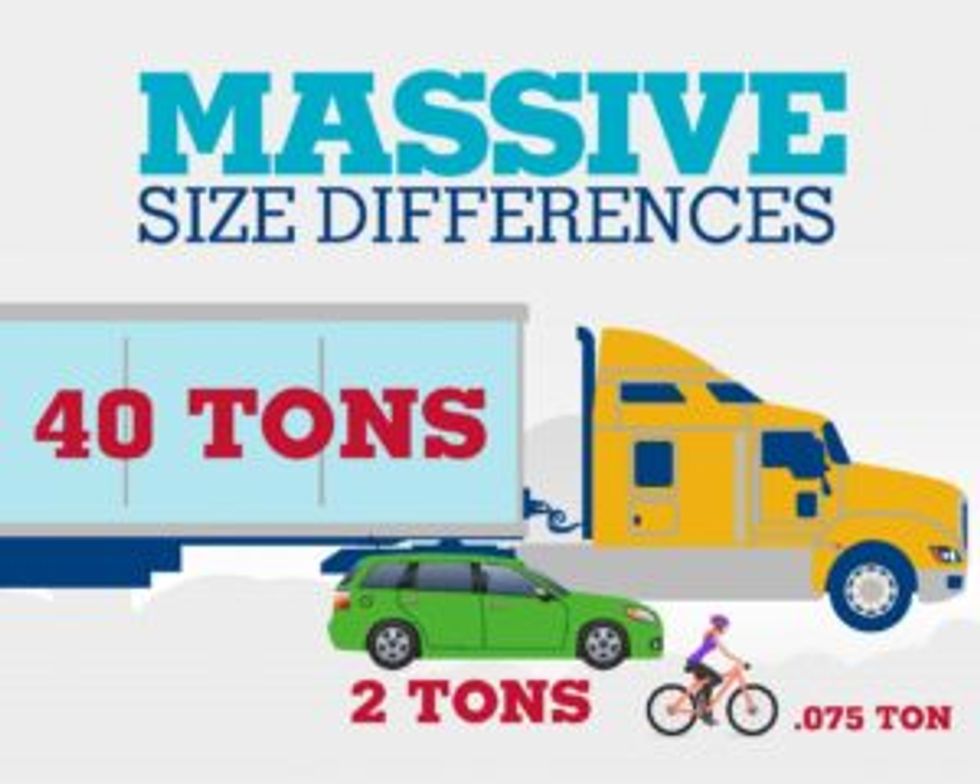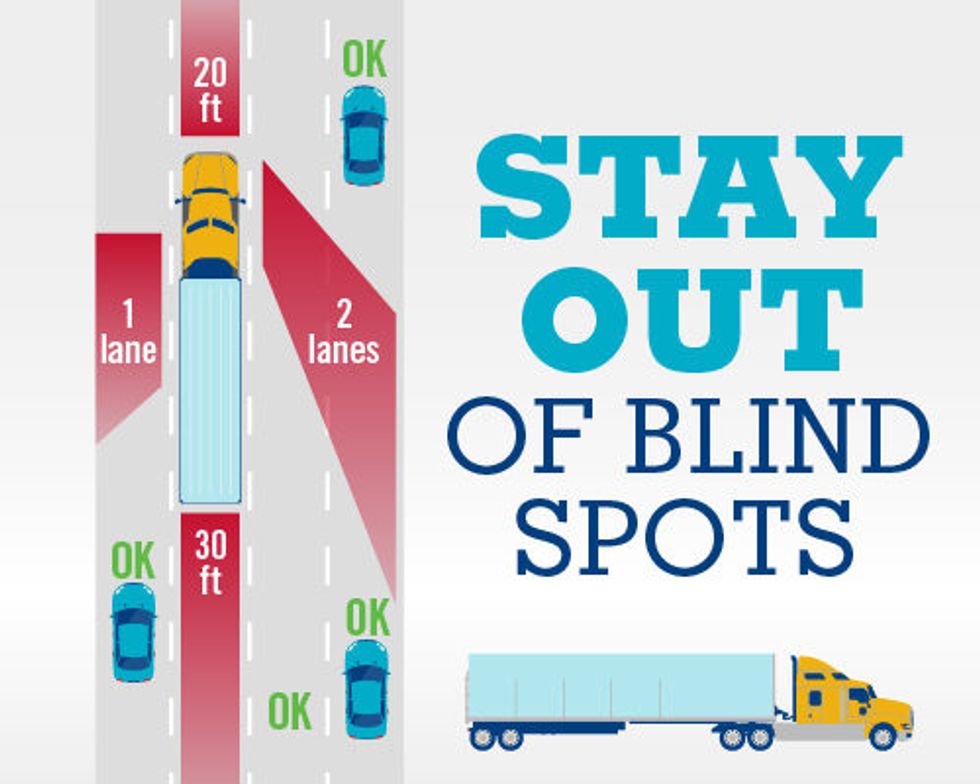
Safety Tips for Automobiles and Commercial Vehicles Sharing the Road
On roads and highways across the country, motor vehicles large and small – including an estimated 12 million commercial vehicles – find themselves shoulder-to-shoulder on the same beaten path.
With so many vehicles sharing the road, safety has taken on special significance.
Recognizing this, the Federal Motor Carrier Safety Administration (FMCSA) has developed the “Our Roads, Our Responsibility” program featuring road sharing tips for passenger and commercial vehicle drivers.
Special emphasis is paid to improving driving behavior, learning to coexist on the same roadways, and working together to reduce crashes.

- Looking out for unexpected road conditions, distracted drivers and motorists who do not understand how commercial vehicles operate. Scan ahead about 15 seconds – or a quarter mile on interstates or one to two blocks in cities – for traffic issues, work zones and other dangers.
- Being sure to signal and give other drivers plenty of time to notice your intent.
- Knowing when to slow – driving too fast for conditions or failing to slow down for curves or ramps creates risk for spills and rollovers, as well as crashes.
- Using seatbelts and staying sharp: Don’t drive when fatigued, too ill to focus or while using medications that make you drowsy or dizzy.
- Never driving distracted. Texting is among the worst driving distractions. Eating, drinking, interacting with a navigational device, map reading, controlling a pet, or any other activity that takes focus off the road can also be a deadly distraction.
- Practicing work zone safety. Work zones have hazards like lane shifts, sudden stops, uneven road surfaces, moving workers and confused passenger vehicle drivers.

- Assuming the driver can’t see you. Trucks and busses have huge blind spots – or No Zones – around the front, back, and sides of the vehicle. If you can’t see the driver in the truck’s mirror, they can’t see you. Don’t drive in a blind spot – slow down or move ahead to stay visible.
- Making sure you can see the driver in the mirror before passing and that the vehicle is visible in your rearview mirror before you pull in front. Give commercial vehicles extra space.
- Tailgating a commercial vehicle puts you in their blind spot. Getting too close when stopped is also dangerous – particularly on an upgrade, where a commercial vehicle might roll back.
- Commercial vehicles require extra turning room. They swing wide, or may even initiate a turn from a middle (rather than far right) lane.
- Buckle up, stay focused and don’t drive fatigued.
Keeping its 4,400 drivers in the U.S. and Canada safe, as well as safety of the public, is of special significance to Penske Logistics, according to Dennis Abruzzi, senior vice president of safety.
“At Penske, it is a professional truck driver’s responsibility to operate their vehicle in a safe manner at all times. There are many factors that can impact operating a commercial motor vehicle safely, such as being prepared for the work day, understanding the equipment/technology (and how to safely operate it) and being familiar/compliant with the hours of service regulations,” he said.
A key aspect of being safe on the road is anticipating the actions of other drivers.
“By anticipating these actions, a skilled driver will be able to operate their vehicle in the safest possible manner, thus avoiding potential accidents,” he said.
By Bernie Mixon